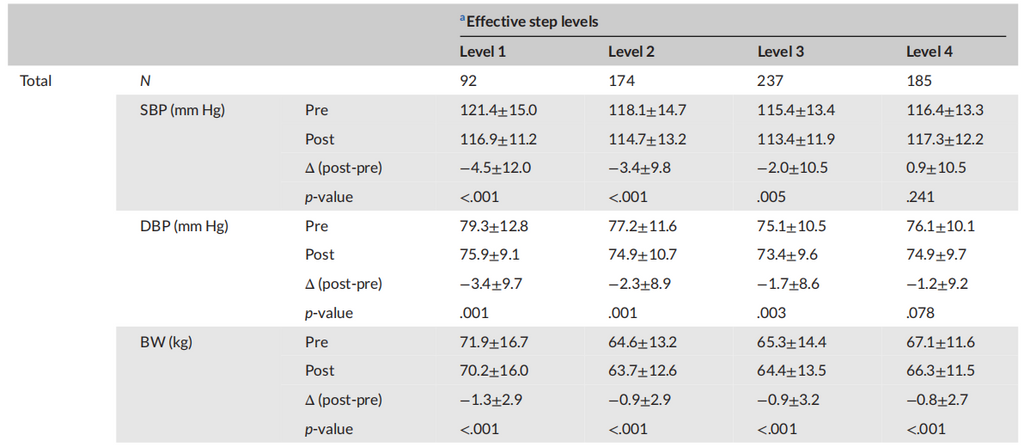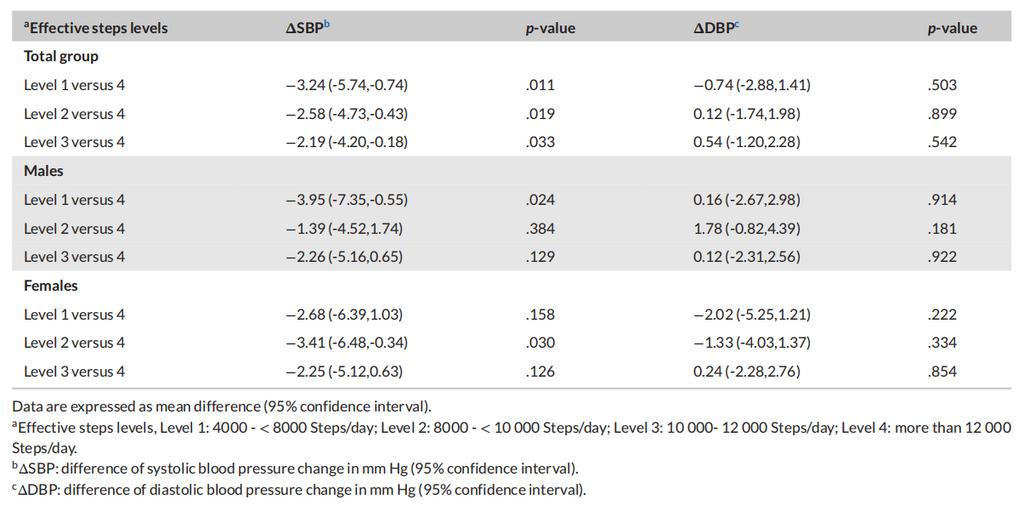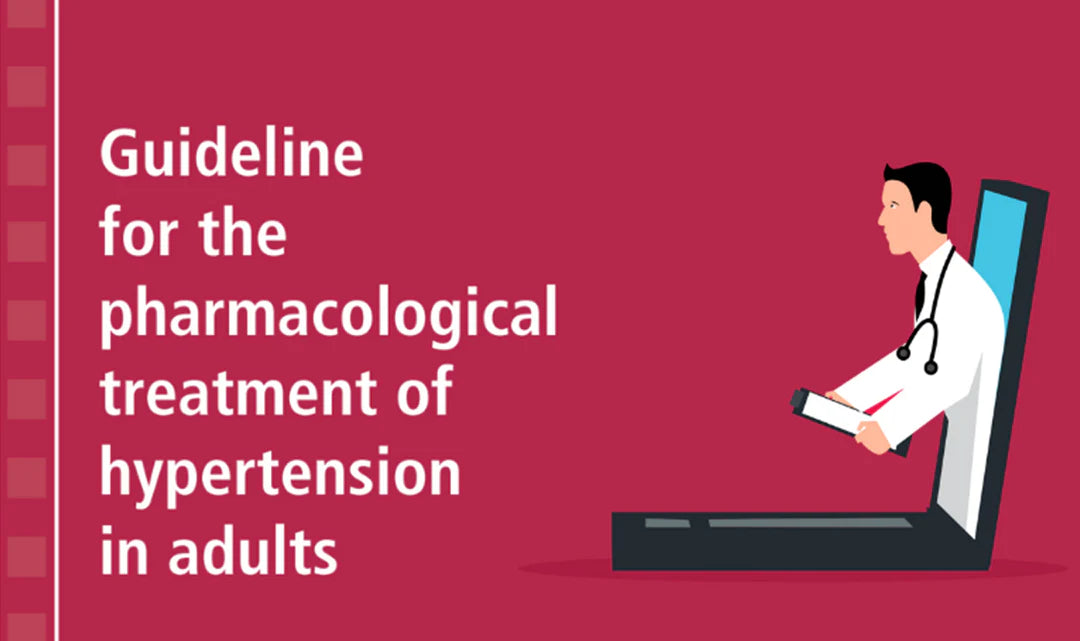The prevalence of hypertension has been increasing year by year. The worldwide hypertension cases were estimated to increase by 15-20%, to 1.5 billion by 2025. Hypertension is a recognized major risk factor for cardiovascular disease and death, with approximately 54% of strokes and 47% of coronary heart diseases are associated with hypertension worldwide. The prevention and control of hypertension is of great significance for reducing the risk of death from cardiovascular diseases.
It is stated in the American Heart Association (AHA) Scientific Statement -《Weight Loss Strategies for the Prevention and Treatment of Hypertension》 that physical activity (PA) and exercise training can reduce hypertension. The World Health Organization (WHO) recommends that adults aged 18-64 should get at least 150-300 minutes of moderate-intensity aerobic exercise per week, or at least 75-150 minutes of vigorous-intensity aerobic exercise, or an equivalent combination of moderate- and vigorous-intensity activity throughout the week.
However, existing guidelines do not clearly address the upper limit of exercise for improving health outcomes, especially those related to cardiovascular health.

Chang Cuiqing's team from the Third Hospital of Peking University studied and analyzed the effect of brisk walking on blood pressure in occupational groups to determine the appropriate amount of exercises required for blood pressure management. The study, published in The Journal of Clinical Hypertension, provides a theoretical basis for the application of exercise intervention in blood pressure management.
The final analysis included 688 active participants (sample), including 331 males and 357 females. Participants must meet the following conditions: full-time employees, aged 18-65 years old, a sedentary lifestyle involving six or more hours of sitting, and no other serious diseases; for those who have hypertension, their blood pressure control must meet systolic blood pressure not exceeding 180mm Hg and / or diastolic blood pressure not exceeding 110 mm Hg. As a self-controlled study, participants were required to wear a pedometer to record their daily steps and to measure their own blood pressure before and after exercise for comparison. The entire data collection process was 3 months.
According to the number of steps required per day, the participants were divided into four groups, namely: Level 1 - 4000-8000 steps/day, Level 2 - 8000-10000 steps/day, Level 3 - 10000-12000 steps/day and Level 4 - greater than 12000 steps/day (beyond exercise recommendations).
After brisk walking for 3 months, what happened to their blood pressure?Let's find out together.
Overall changes in BP before and after brisk walking
Comparing with the participants' initial blood pressure levels, after three months of brisk walking, the systolic blood pressure (SBP) and diastolic blood pressure (DBP) of the first three groups Level 1 - Level 3 were significantly reduced; their systolic blood pressure (SBP) of the three groups decreased respectively 4.5 mm Hg, 3.4 mm Hg, and 2 mm Hg, while their diastolic blood pressure (DBP) decreased by 3.4 mm Hg, 2.3 mm Hg, and 1.7 mm Hg, respectively. The diastolic blood pressure (DBP) of Level 4 did not change significantly while their systolic blood pressure (SBP) even increased slightly (see Table 1 below):
Table 1 Changes of blood pressure and body weight in different effective steps levels
Source: 《Dose-effect relationship between brisk walking and blood pressure in Chinese occupational population with sedentary lifestyles》
Changes in BP before and after brisk walking: by gender
In terms of gender, after 3 months of brisk walking, the mean systolic blood pressure (SBP) of males decreased significantly in both Level 1 and Level 2 groups, by 3.1 mm Hg (p = .010) and 3.6 mm Hg (p = .001), respectively; their diastolic blood pressure (DBP) decreased significantly in level 2-4 groups.
For the female group, systolic blood pressure (SBP) decreased significantly in Level 1-3, with an average decrease of 6.3 mm Hg (p = .001), 3.4 mm Hg (p = .001), and 2.1 mm Hg (p = .023) respectively; the diastolic blood pressure (DBP) decreased significantly only at Level 1 and Level 2, by 4.3 mm Hg (p = .003) and 2.4 mm Hg (p = .005), respectively.

Changes in BP : by hypertensive/non-hypertensive
The study further divided the participants into hypertensive and non-hypertensive groups. After 3 months of brisk walking, for the hypertension group, the study found that the diastolic and systolic blood pressures both significantly decreased at Levels 1 to 4 (p < .05).
For the non-hypertensive group, only Level 2 showed a significant decrease in systolic blood pressure (-2.2 ± 9.1 mm Hg, p = .004). On the other hand, Level 4 even had a significant increase (2.0 ± 10.2 mm Hg, p = .015).
The relationship between BP and effective number of steps
The study found out that there was a dose-effect relationship between the change of SBP and the effective steps (see Table 2). Compared with the highest category of effective steps, the difference of SBP change was -3.24 mm Hg (95% CI: -5.74 to -0.74, p = .011) for the lowest (Level 1) category, -2.58 mm Hg (95% CI: -4.73 to -0.43, p = .019) for Level 2, and -2.19 mm Hg (95% CI: -4.20 to -0.18, p = .033) for level 3. However, there was no significant dose-effect relationship between the effective steps and the changes of DBP.
Table 2 The dose-effect relationship between changes of blood pressure and effective steps levels
Source: 《Dose-effect relationship between brisk walking and blood pressure in Chinese occupational population with sedentary lifestyles》
Implications of the research results
From the research, we found that after 3 months of brisk walking exercise (with a speed at 100-150 steps/min), working people can effectively reduce their blood pressure. There was a significant dose-effect relationship between changes in SBP and effective steps levels, but not in diastolic blood pressure (DBP).
Rather, participants who walked 4000-8000 steps per day, 8000-10000 steps or 10000-12000 steps per day had significantly better effect on reducing systolic blood pressure (SBP) than those who walked more than 12000 steps per day. In addition, the group with the lowest number of brisk walking steps (4000-8000 steps/day) had a better overall blood pressure lowering effect than the other three groups. When walking briskly more than 8000 steps per day, the overall blood pressure reduction effect is weakened as the number of steps increases; when the number of steps exceeds 12000 steps, the systolic blood pressure (SBP) does not decrease but increase instead.

When it turns to a gender perspective, in the male cohort, only the effective steps range from 4000 to < 8000 per day showed a better SBP reduction effect; while for female, the effect of reducing SBP at 8000 to < 10000 steps/day was better. It is also noted that regardless of sex, the effective steps level of > 12000 steps per day did not indicate a better reduction of SBP. That’s why we must avoid excessive exercise and always arrange our exercise intensity reasonably.
The research further divided the participants into hypertensive group and non-hypertensive group. For participants with hypertension, brisk walking can significantly reduce their blood pressure. Participants in all four groups experienced significant reductions in systolic blood pressure (SBP) and diastolic blood pressure (DBP) after 3 months’ brisk walking intervention. For non-hypertensive people, brisk walking had no significant effect on blood pressure reduction, only when effective steps range from 8000-10000 per day, the systolic blood pressure (SBP) was significantly reduced.
In general, if you’re one of the occupational office workers who are sedentary for more than 6 hours per day, brisk working (with a speed at 100-150 steps/min) with a certain number of steps (4000-8000) per day is obviously beneficial to your BP control. But while exercise is good, excessive exercise is not beneficial to BP management. It’s very important for us to make a suitable exercise plan for our health.
YHE BP Doctor Pro smart watch can also help you in health management. In addition to monitoring blood pressure, blood oxygen and heart rate, it’s exercise function can record your steps, distance and calories burned at any time. The intensity of exercise will be always in your hands.



Leave a comment
This site is protected by hCaptcha and the hCaptcha Privacy Policy and Terms of Service apply.